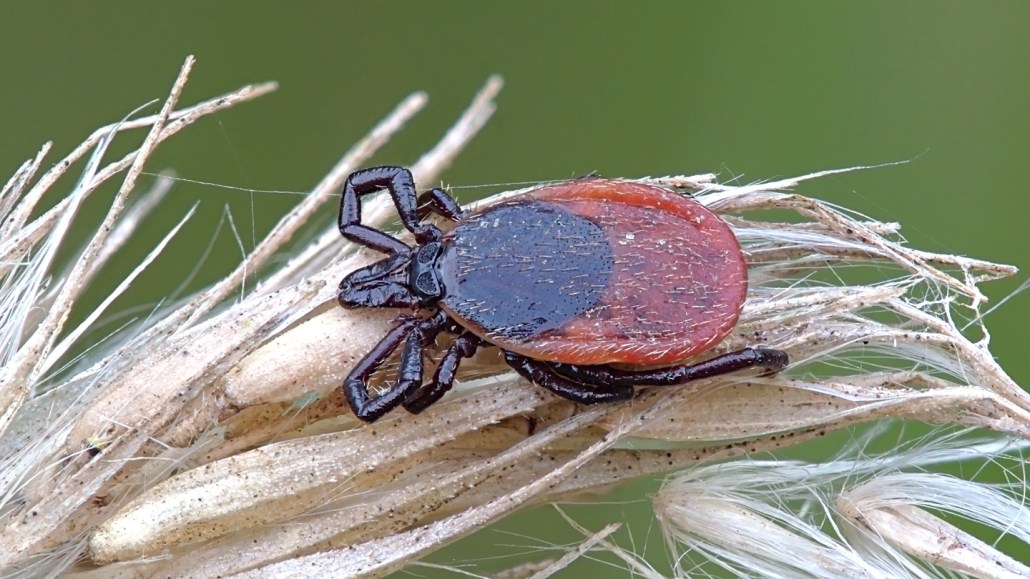
Ticks, like this castor bean tick (Ixodes ricinus), might sometimes make the jump to hosts thanks to static electricity.
W.alter/Wikimedia (CC BY-SA 4.0)
You don’t need to touch a tick for it to find you, a new study suggests. The blood-sucking parasites may be able to catapult themselves from vegetation to their hosts thanks to static electricity.
Mammals, birds and reptiles carry considerable electrostatic charges — equivalent to voltages of hundreds to tens of thousands of volts. And ticks seem to respond to that. Tick nymphs brought close to various objects charged to voltages encountered in nature frequently whoosh across the gap to land on those surfaces, researchers report June 30 in Current Biology.
“We know that static electric charges naturally accumulate on many animals, but how the forces generated by these electric charges influence the ecology of said animals has barely been studied,” says Sam England, a biologist at the University of Bristol in England.
Ticks are fiendish parasites that feast on blood of vertebrates and are notorious for spreading Lyme disease, Rocky Mountain spotted fever and other potentially debilitating diseases (SN: 8/9/17; SN: 11/15/18).
To see if ticks respond to the natural electric fields emanating from their potential hosts, England and his colleagues started with dried rabbit feet and acrylic surfaces charged by rubbing rabbit fur on them. Live castor bean tick nymphs (Ixodes ricinus) held anywhere from a few millimeters to a few centimeters away were readily yanked through the air to these surfaces, showing that electrical forces could carry the ticks across distances several times longer than they are.
The team then placed 20 live nymphs, one at a time, on an aluminum plate sitting just a few millimeters below a tiny spherical steel electrode. When the electrode was charged to 750 volts — typical of voltages found on vertebrates — three out of four ticks traversed the gap. When the team repeated the experiment with the same number of ticks but no charge on the electrode, no nymphs zipped across.
By varying the voltage on the sphere and the distance between it and the plate, the team also found that dead nymphs could be lifted by an electric field comparable to that from human skin from about 10 centimeters, or four inches, away.
Interestingly, the electrostatic force in every case pulled the nymphs against gravity — an extreme scenario as ticks usually aren’t situated underneath a host in nature.
“This is quite unique given that ticks cannot jump to reach their hosts,” says Martin Giurfa, a neuroscientist at University of Toulouse in France who studies learning and memory in insects and who was not involved in the study. “The fact that they are teletransported by the electrostatic fields produced by their hosts … is remarkable.” It’s possible, he adds, that other parasites that latch on to skin might be similarly attracted to their hosts. Previous research has demonstrated how parasitic nematodes can use static electricity to catapult themselves on to fruit flies (SN: 3/16/23).
The findings suggest new anti-tick measures for people, England says. Outdoor clothing, for example, could be treated with an antistatic spray to reduce the tendency of these fabrics to accumulate static charge.





